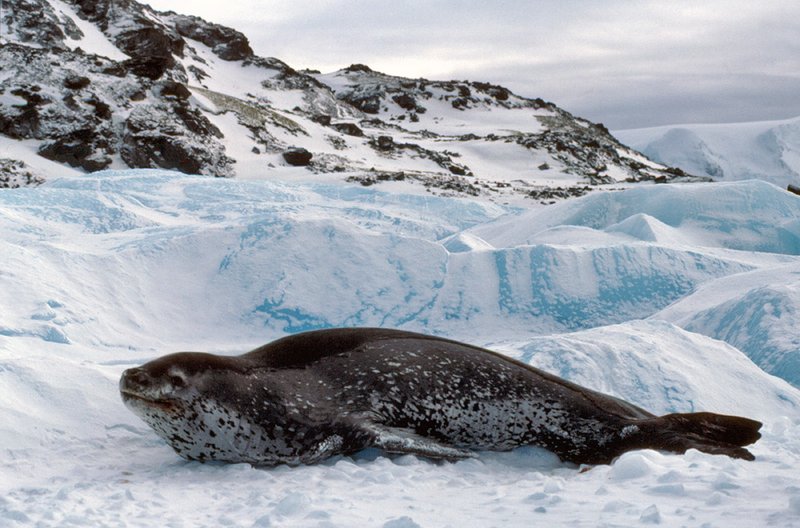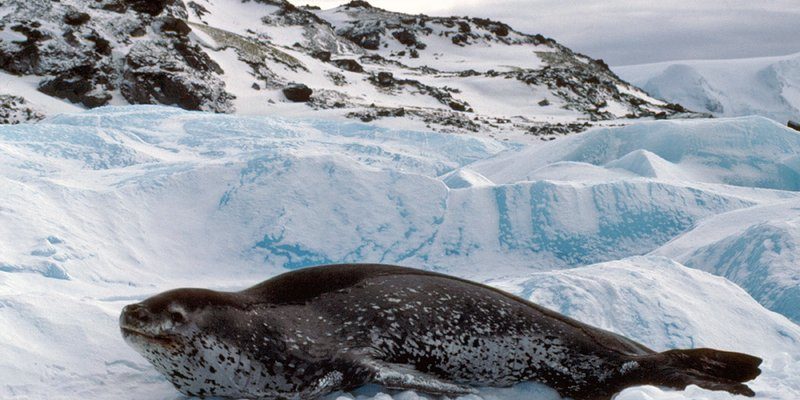
Leopard seals are primarily found in the icy waters surrounding Antarctica, but their range is a bit broader than that. Think of the seas around the continent as a giant playground full of icebergs, kelp forests, and rich marine life. In this article, we’ll dive deep into the different areas where leopard seals are found, their habitats, and why these locations are so crucial for their survival.
Antarctica: The Primary Home of Leopard Seals
Leopard seals are most commonly associated with Antarctica, where they thrive in the cold, nutrient-rich waters. You might be wondering why this frigid landscape is so appealing to them. The answer lies in the abundant food sources and the unique environment.
Antarctica provides a buffet of seals, krill, and fish, perfect for the leopard seal’s diverse diet. They’re excellent hunters, using their speed and agility to catch prey beneath the ice. Picture them darting through the water, much like a torpedo, with their powerful bodies propelling them forward. The cold temperatures also play a role in keeping their thick blubber intact, which is crucial for insulation and energy reserves during leaner months.
In addition to hunting, leopard seals are often seen lounging on sea ice, where they rest and bask in the sun. This ice serves as a perfect platform for them to survey their surroundings and relax between meals.
Sub-Antarctic Islands: A Secondary Habitat
While Antarctica is the main stage, leopard seals also inhabit various sub-Antarctic islands. These islands, including South Georgia and the South Shetland Islands, offer a more temperate climate and a different array of food sources.
These islands boast rich ecosystems with plenty of krill and various fish. Leopard seals are often spotted hunting near the shorelines, taking advantage of the rich waters that surround these land masses. The beaches here can get crowded with seals during the breeding season. Imagine a bustling community, with seals coming and going, some basking while others are fiercely protective of their pups.
You might also find leopard seals sharing these spaces with other seal species, which creates a lively, competitive environment. It’s like a busy neighborhood where everyone has their own turf but occasionally crosses paths.
Coastal Regions of South America
Surprisingly, leopard seals can also be found along the coastal regions of South America. From the southern tip of Chile to parts of Argentina, these seals have been spotted hunting and resting. This might seem unusual since they are predominantly associated with icy waters, but it showcases their adaptability.
During the summer months, some leopard seals venture north as the ice melts, seeking warmer waters and different feeding opportunities. The coastal areas of South America offer an interesting mix of marine life, which can attract these seals. Think of it as a vacation for them, where they can explore new feeding grounds while still being close to their chilly home base.
While they’re not as commonly seen in these areas, their presence highlights their capability to thrive in diverse environments. It’s a reminder that nature is full of surprises!
Behavior and Adaptations in Their Habitats
The behavior and adaptations of leopard seals are key to their survival in various habitats. Their thick fur and blubber provide the insulation needed to handle the icy waters of Antarctica. This is essential since they spend a lot of time swimming and hunting in freezing temperatures.
During the breeding season, which occurs from late spring to early summer, female leopard seals head to the ice to give birth. The pups are born on the ice, where they can be easily protected from predators. This choice of birthing location is a clever adaptation, ensuring their young are safe as they grow and learn to swim.
Leopard seals are solitary animals for the most part. They prefer to hunt alone, which allows them to be stealthy and efficient hunters. However, they do gather in small groups during breeding season or while resting on the ice. Imagine an introverted apex predator that knows when to socialize but prefers its own company for most of the year.
Why Are Their Habitats Important?
Understanding where leopard seals are found helps us appreciate the importance of their habitats. These ecosystems are not just homes for leopard seals; they support a rich diversity of marine life.
The health of the ocean environment directly impacts the food sources available for leopard seals, which in turn affects their population. If the waters become too warm or polluted, it can disrupt the delicate balance. Additionally, climate change poses a significant threat, causing melting ice and altering prey availability.
Protecting their habitats ensures that leopard seals, along with countless other marine species, can continue to thrive. It’s like maintaining a balanced diet for the ocean ecosystem—every creature plays a role, and losing even one can create a ripple effect.
Conservation Efforts and the Future of Leopard Seals
Efforts to conserve leopard seals and their habitats are crucial for their continued survival. Organizations are actively working to monitor populations and address the impacts of climate change. These efforts are incredibly important in ensuring that future generations can enjoy the beauty of these amazing creatures.
Researchers study leopard seals to understand their behavior, feeding habits, and habitat needs. This data is invaluable for creating effective conservation strategies. By ensuring that their habitats are protected, we can support not just leopard seals but also the entire marine ecosystem they inhabit.
As more people become aware of the challenges facing these seals, there’s hope for a brighter future. Conservation starts with education, and every small action can contribute to protecting these magnificent creatures and the oceans they call home.
In conclusion, leopard seals are truly remarkable animals that call some of the most unique and remote places on Earth their home. From the frigid waters of Antarctica to coastal regions of South America, they showcase adaptability and resilience. Understanding where they thrive helps us appreciate the delicate balance of marine ecosystems and the need for conservation. Every effort counts in preserving the habitats that support these incredible seals and the diverse life that exists alongside them.

